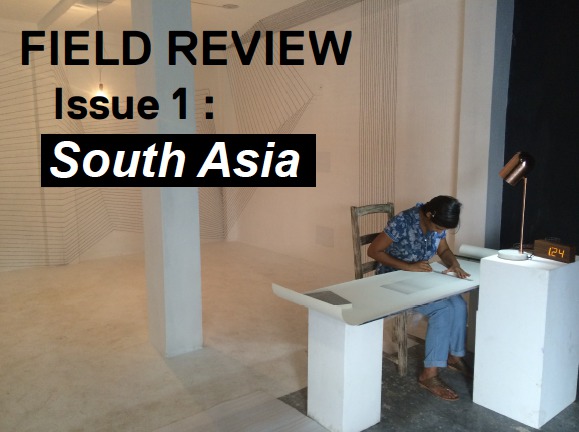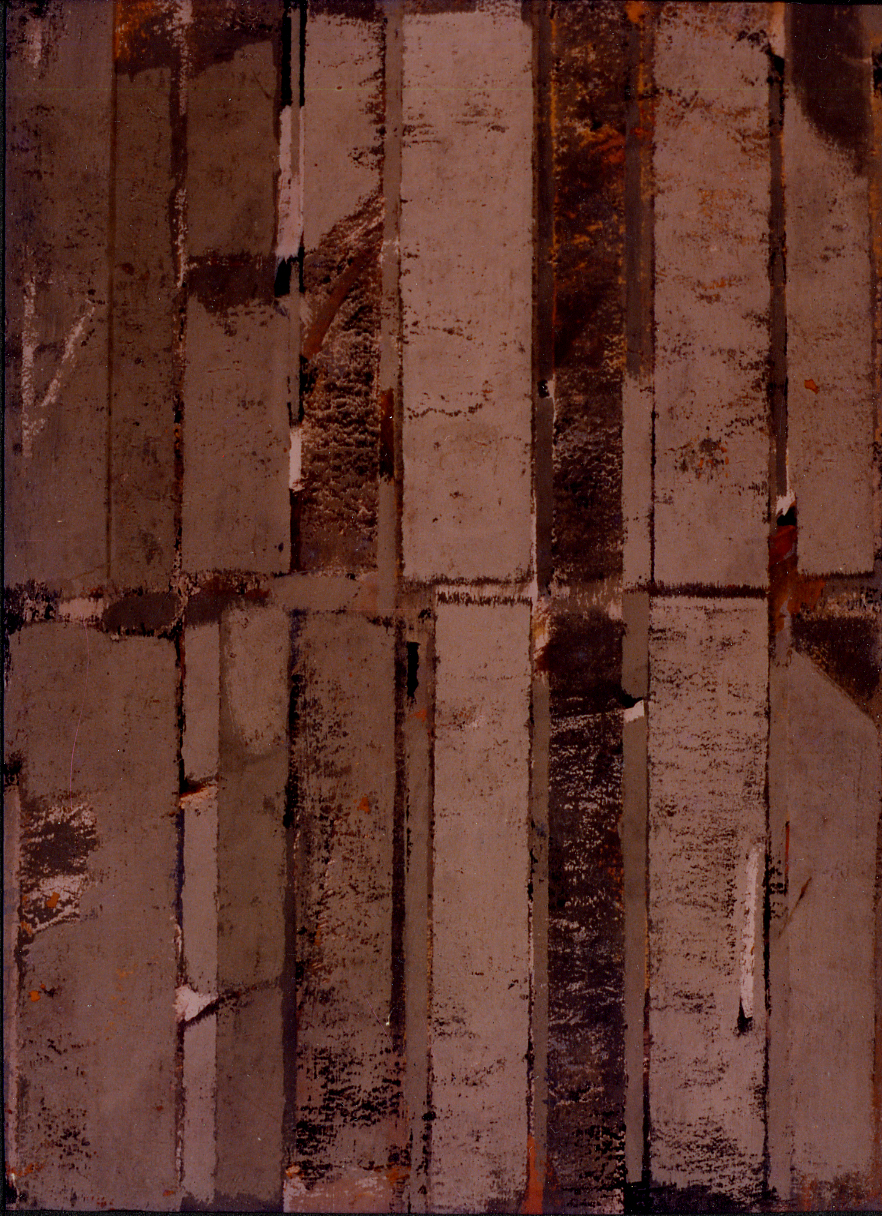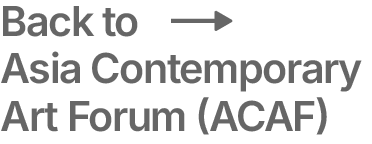FIELD REVIEW: South Asia

Introduction
Meenakshi Thirukode
______________________________________
Abstraction De-Constructed through the Lens of Post-Colonialism
Achia Anzi
Grasping at the Untold
Jyoti Dhar
Kumar Vaidya: Through the Lens of Erasure and Invisibility
Meenakshi Thirukode
Yasmin Jahan Nupur: Dancing in the Non-Spaces of Performance
Zeenat Nagree
The Poetics of Absence and Presence in Parul Gupta’s Art: A Case for Revisiting Theories and Histories of Abstraction
Somak Ghoshal
The Immediacy Of Rejection: Music, Curation, and Sincerity in New India
Rana Ghose
______________________________________
About the Author
Meenakshi Thirukode
is currently a FICA Inlaks 2016-17 scholar at the MRes Curatorial/Knowledge, Goldsmiths, University of London. She is also the Curatorial Director at Exhibit 320 and its non-profit space 1After320.She is the co-founder Project For Empty Space, a non-profit which brings public art to abandoned and unusual urban spaces. Thirukode graduated with honors from the Masters program at Christies, in New York. She has written for both, local and international publications including ArtAsiaPacific, Art India, Whitewall Magazine, Fuschia Tree and The Hindu Newspaper, on contemporary art from South Asia. She has also curated exhibitions on South Asian contemporary art in New York and India. Thirukode has served on the board of the South Asian Womens Creative Collective (SAWCC) and Christies Alumni Board. She recently was the director of the New Media for Bushwick Film Festival, where she oversaw the setting up the department in its inaugural year at the 2013 festival and curating its program.
Kumar Vaidya: Through the Lens of Erasure and Invisibility
Meenakshi Thirukode
The exploration of Kumar Vaidya’s practice requires that we maneuver through his artistic practice by acknowledging the fixed ways we perceive and construct art history. From that point on what does an attempt to situate his work (or relocate from) re-imagined art histories entail? Often times, the basis of analysis, critique and extrapolation rests heavily on the validation of a practice by associating it to a chronological, and thereby a monolith art historicity. While this has been challenged and confronted when looking at a body/bodies of work within an artists practice, art history itself remains largely a binary. It is essentially a ‘rooted’ [1] set of annotations. And so what it beckons is a re-imagination. Art history, must be seen as malleable, floating and as a set of relations between the visible and the invisible narrative. The invisible here might never be discovered and the visible might be a re-articulation of what has already occurred in the past. And yet it is this ambiguity, this nature of ideas and stories and moments that can float and find associations in a rhizomatic [2] way, that will lend a more nuanced look at Vaidya’s practice. One must also note here that Vaidya’s practice evokes a visual and formal aesthetic that tends to elicit very obvious ways of being seen and consumed by the ‘audience’ as well as by the artist himself.
Kumar Vaidya born in 1964, studied at the Sir J J School of Art, Mumbai before training at the Nationale Superieure des Beaux-Arts de Paris on a French government scholarship in 1993. In his early canvases from the 1980’s, Kumar Vaidya covers the surface with strokes of color in a free wheeling gesture. The paints are smudged, layered, and in parts, seemingly scratched from the surface. Undulating forms and pockets of erasure and addition dominate the formal aesthetic. In these early works a certain familiarity exists – perhaps from the dominance of a certain way of seeing located in a school of thought within ‘Abstraction’ in the context of Indian modernist art histories. What is interesting is that given a lack of engagement with the artists work in a critical lens, this familiarity is a bias on part of the viewer. Either trained to look through the critics lens whose ‘eye’ shifts through many chronologies in a discipline or genre, or from the gaze of a viewer who has invariably been conditioned to find certain associations given that ‘abstraction’ is now a framework ubiquitous outside of academia; names like S H Raza, thanks to the dominance of a market-centric visibility, invoke immediate associations and comparisons of artists that have a similar formal language.

Kumar Vaidya, Untitled, Oil on Canvas, c.1980’s, Image courtesy the artist.
Vaidya’s work however in the 90’s and 2000’s evolves into two trajectories – one where he worked on architectural surfaces – covering entire walls of office spaces and homes while the other was the large-scale two-dimensional canvas. In his more ambitious architectural paintings, Vaidya takes on a performative role – every gesture and application of paint is thought out and yet, simultaneously evokes the fluidity reminiscent in his early canvases. In perhaps Richter like notions of the erasure or ‘blur’ as something that “makes all the parts a closer fit”, Vaidya‘s is a long, deliberate process that is captured in a rare video accessed from the archive of the artist. Paint is applied and removed in strokes that are deliberate in order to produce lines and angles that belie the number of layers on the surface. An illusion occurs, where the viewer can’t easily discern the top coating from the very first, thereby referencing an illusion reminiscent of the principles of perspective coupled with the language that was the pre-occupation of movements such as op-art. Vaidya in essence takes from art histories, not necessarily privileging one over the other, and does something more with it – something that is more visceral in the experience of the work rather than just engaging with it at a formal aesthetic level. This process finds its way into large scale canvases as well. While the dimensions are more constricted, the method and process still remain the same. Paintings move from mural-like to one that is more textural.

Kumar Vaidya, Untitled, Oil on Canvas, c.1980’s, Image courtesy the artist.
In particular, Vaidya predates a younger generation of artists working with notions of color, light and material in South Asia within the theories of abstraction in method, process and scale. In the contemporary moment, one that remains fluid in terms of how we contextualize practices, there is a tendency to use material other than oils or acrylics as a way to move away or push forward ones practice from perhaps what would seem ‘traditional’ to the more conceptual within this genre. Vaidya’s canvases and interventions, where he still sticks to the use of oils and acrylics, tend to traverse such dilemmas of belonging or un-belonging. This could be a consequence of the ‘invisibility’ of his work and its analysis within structured ways of understanding his practice.

Artist Kumar Vaidya working on site, undated image from the artist’s personal archive.
One also has to consider both the geographical and cultural context of the artist himself as well as the fixed linearity of art history to which the artist unwittingly situates himself in order to be visible. It is therefore important to think of these narratives existing as multiplicities rather than the singular rootedness of authority. With this self-awareness, what then happens to the growth of a practice? What does it do for its audience? How does it simultaneously reject associations without the fear of being rendered invisible or too narrowed down into histories ‘white male gaze’ narratives? How does one adapt and synthesize a practice like Vaidya’s who has largely remained outside of these forms of pedagogy?
There is a beckoning here to not just look at a chronological reading and instead to think of practice as a set of connections, much like Vaidya’s own compositions that present themselves in the now.
_____________________________________________________________________________
Bibliography
1. Rooted, is used here in the manner referred to by Edouard Glissant in his essay ‘Poetics of Relation’. The root he describes “is unique, a stock taking all upon itself and killing all around it. In opposition to this they (Gilles Deleuze and Felix Guattari) propose the rhizome, an enmeshed root system, a network spreading either in the ground or in the air, with no predatory rootstock taking over permanently. The notion of the rhizome maintains, therefore, the idea of rootedness but challenges that of a totalitarian root. Rhizomatic thought is the principle behind what I call the Poetics of Relation, in which each and every identity is extended through a relationship with the Other.”, Edourd Glissant , Poetics of Relation, trans. by Betsy Wing, (The University of Michigan Press),11.
2. Ibid


